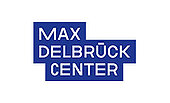Safer Sleeping Beauty transposase variants with improved integration profiles (away from exons)
Keywords
Sleeping Beauty, transposase, transposon, SB100X, K248R, gene editing, integration profile, AT-rich, safe harbors, gene therapy
Invention Novelty
In the last decade, gene therapies have experienced a breakthrough, with most strategies initially focusing on viral vector systems, even though these are quite difficult and expensive to manufacture on a larger scale. Accordingly, given their low cytotoxicity, immunogenicity, and mutagenicity, nonviral delivery systems have caught up, although they, too, face challenges in terms of efficacy, specificity, and safety. One of the best-characterized nonviral delivery systems is the Sleeping Beauty (SB) system of the Tc1/mariner family, which is composed of (i) a mobile genetic element (--> transposon) flanked by two terminal inverted repeats (TIRs) and (ii) the SB transposase. After reconstruction from various fish species, the ancient SB system was able to efficiently mediate gene transfer in a variety of vertebrates (incl. humans), and was successively developed (--> vector, TIR, and transposase) into a powerful tool for genome engineering (incl. gene therapy), with first examples now in the clinic. The present invention provides safer SB transposase variants that redirect integrations away from exons, regulatory elements, and nucleosomal DNA.
Value Proposition
The SB systems is one, if not the, most thoroughly studied transposon systems, which can be and has been exploited for a wide spectrum of gene editing applications, incl. generation of transgenic cell lines, reprogramming of pluripotent stem cell, phenotype-driven screens in tumor biology, gene transfer in animals, as well as gene therapy. The latter gene therapeutic use is supported by the system`s nearly random integration profile, which, however, still poses some genotoxic risks. The invention provides SB transposase variants with significantly improved integration profiles, facilitating enhanced safety and utility in gene therapy settings.
Technology Description
Previous studies revealed that the SB system has a close-to-random integration profile with preferential insertion at TA dinucleotides as well as in DNA regions with certain physical properties (e.g., bendability). However, the structural basis of SB target site selection remained unknown, although it was noted that the catalytic domain (aa114-340) of SB transposase shares striking homology with immunoglobulin recombinases and integrases of retroviruses, all of which mediating the integration of mobile genetic elements into a given target DNA. Based on homology modeling using crystal structures of representatives of the latter enzyme classes, the inventors identified a couple of amino acid residues in SB transposase that are potentially involved in shaping the enzyme`s integration site selection and used saturation mutagenesis to interrogate their respective relevance in the context of the hyperactive SB transposase variant SB100X. Eventually, these studies led to the identification of three SB100X mutants (--> H187V, P247R, and K248R) that direct a significant fraction of transposon integrations away from exons and regulatory regions (incl. promoters and enhancers) into presumed safe harbor regions. This is expected to significantly reduce the risk of insertional mutagenesis and associated oncogenesis during gene therapy. Importantly, all mutations are fully compatible with other clinically relevant SB100X variants, including mutant Q124C with enhanced transpositional efficacy (see TO 03-00542).
Commercial Opportunity
The SB system and the improved SB transposase variants are available for in-licensing.
Development Status
Properties and integration profiles of SB100X variants have been extensively studied in vitro in human cells and validated in the context of other clinically relevant SB100X mutants (incl. activity enhanced Q124C).
Patent Situation
WO2023/036877 has been filed in September 2022.
Further Reading
Sandoval-Villegas et al., 2021, Int. J. Mol. Sci. 22: 5084; and Miskey et al., 2022, Nucl. Acids Res. 50: 2807.





